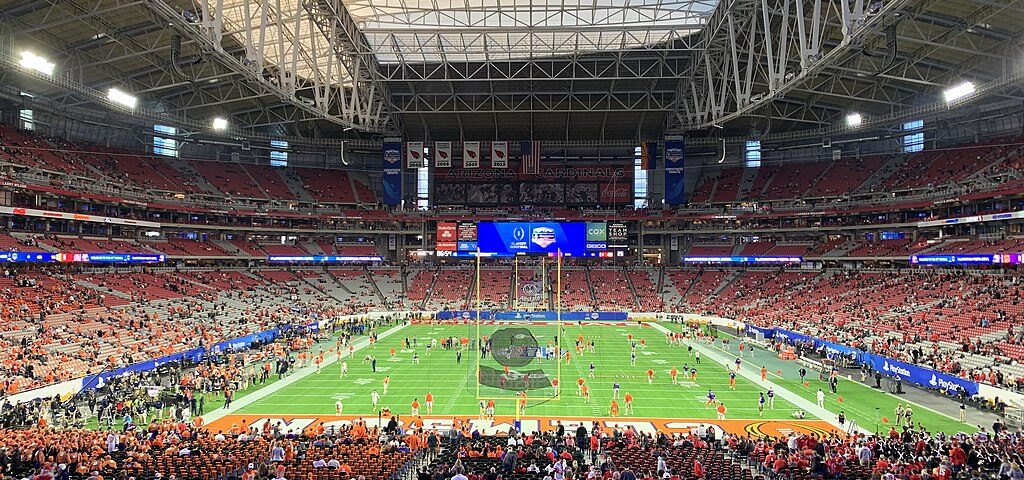
State Farm Stadium, the stadium for the 2023 Super Bowl
10 of February of 2023
On February 12, 2023, the State Farm Stadium (Glendale, Arizona) hosts its third Super Bowl (the image is of the second in 2019). It will be the meeting place between the Philadelphia Eagles and the Kansas City Chiefs. This world-class event has a special guest who is not always given enough attention: the stadium.
The euphoria and focus around sports mean that often, the design, architecture, and engineering of stadiums fade into the background or don’t appear in the photo at all. In this Super Bowl, we are focusing on the infrastructure that makes it all possible: the State Farm Stadium.
This 2006 stadium is the only one in North America that incorporates grass and a retractable roof, has a metal roof that increases the solar albedo, and can expand its stands at the foot of the field from 63,400 seats to 73,000 seats. This is the stadium for the Super Bowl.
What does a stadium offer?
The question may sound naive or basic, but the truth is, stadiums have been around for thousands of years and have not always hosted Super Bowl finals, football games, or sports in general. Moreover, for centuries, stadiums were not even a place.
The stadium (στάδιον) was a unit of measurement that indicated a distance equivalent to about 600 feet (depending on whose foot it was, of course). It wasn’t until 776 B.C.E. that the Olympic stadium gave rise to the current concept of a place to watch others practicing something. Although at that time, the stadium was little more than a dirt field with meadows with a slight slope for seating.
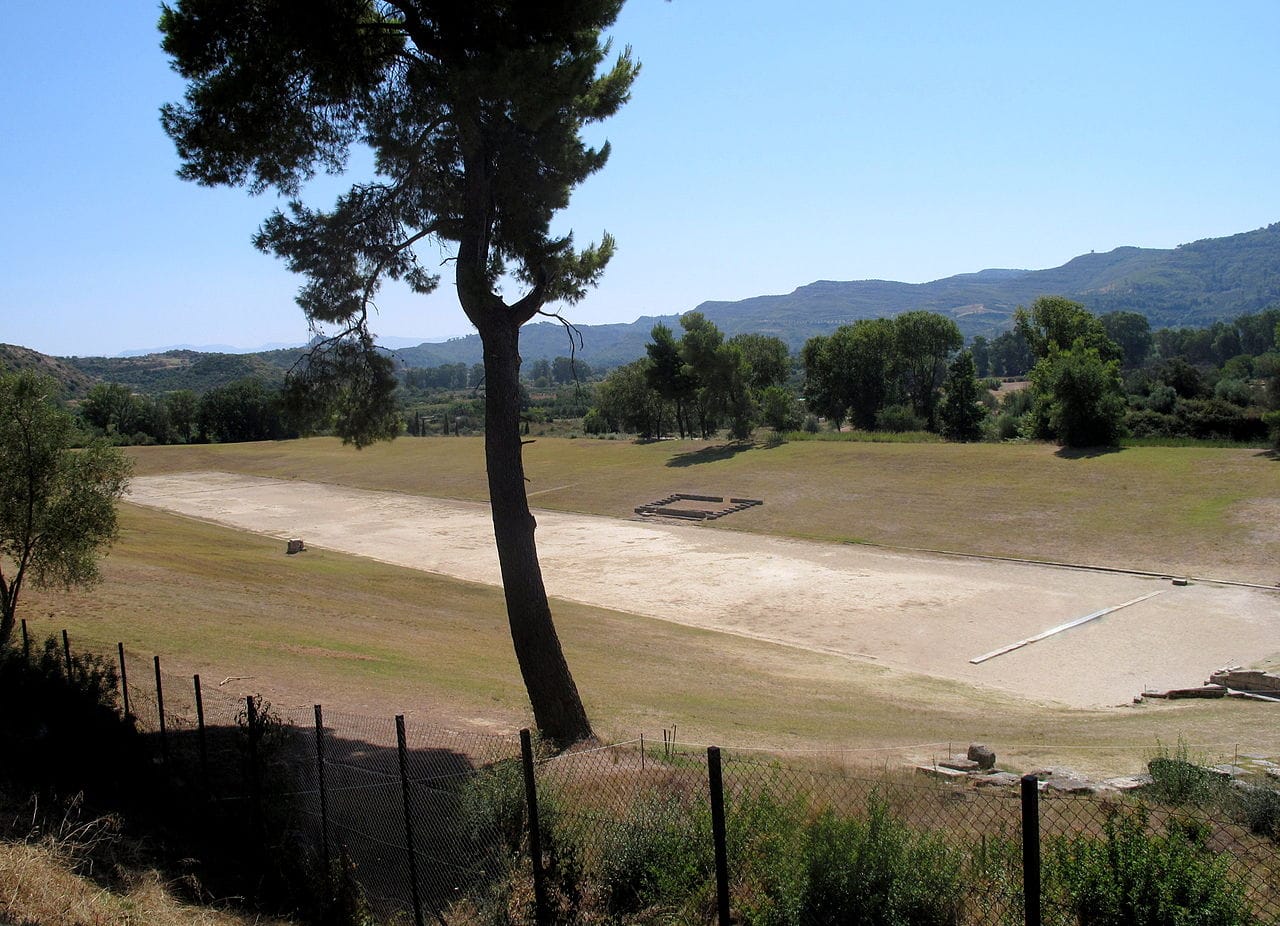
First Olympia Stadium, Lesekreis,
As the centuries passed, stadiums became more professional. Stands sprouted, pits were dug, different tracks took on their characteristic looks, and a complex system of tunnels and galleries snaked under and around them. The Colosseum was one such iconic place that is still standing. The most varied celebrations were held there.
During the 20th century, musical techniques improved significantly, and stadiums started hosting concerts. They had already served as meeting places, sports arenas, voting areas, and even field hospitals. Today, a stadium is a multipurpose building.
The stadium with a retractable floor
As we’ve already seen, stadiums don’t just serve one purpose, and State Farm Stadium is no exception. This stadium frequently hosts events like concerts, mass gatherings such as fairs, monster truck shows, and competitions that don’t need grass – in that case, the almost 9000 m² (2.2 acres) are retracted and stored outside.
In fact, this huge building has the first natural grass retractor system in North America, which moves on huge platforms at about 7 miles per hour. In this way, it is possible to host the Super Bowl’s halftime show and the sports match on the grass in the same location, alternating between both if time allows.
When not in the middle of the stadium, the platform with the lawn goes out of that area. This platform slides 213 meters (700 feet) on 13 rails in about 70 minutes, like a tray. It goes under the first rows of seats and literally sits outside, as shown in this video from NBC News.
Far from being a thin layer of grass, this floor is actually a meter high (40 inches); it includes not only the grass itself but also all the soil needed for its growth, channeling, and other systems. It also weighs quite a bit.
Also, let’s remember that the stadium is in Arizona, a state known for drought, where every drop of water has to be treasured and managed responsibly. That’s why the lawn is stored inside during extreme weather events such as heat waves, which are becoming more frequent due to the climate crisis.
Multipurpose stadiums, ever more common
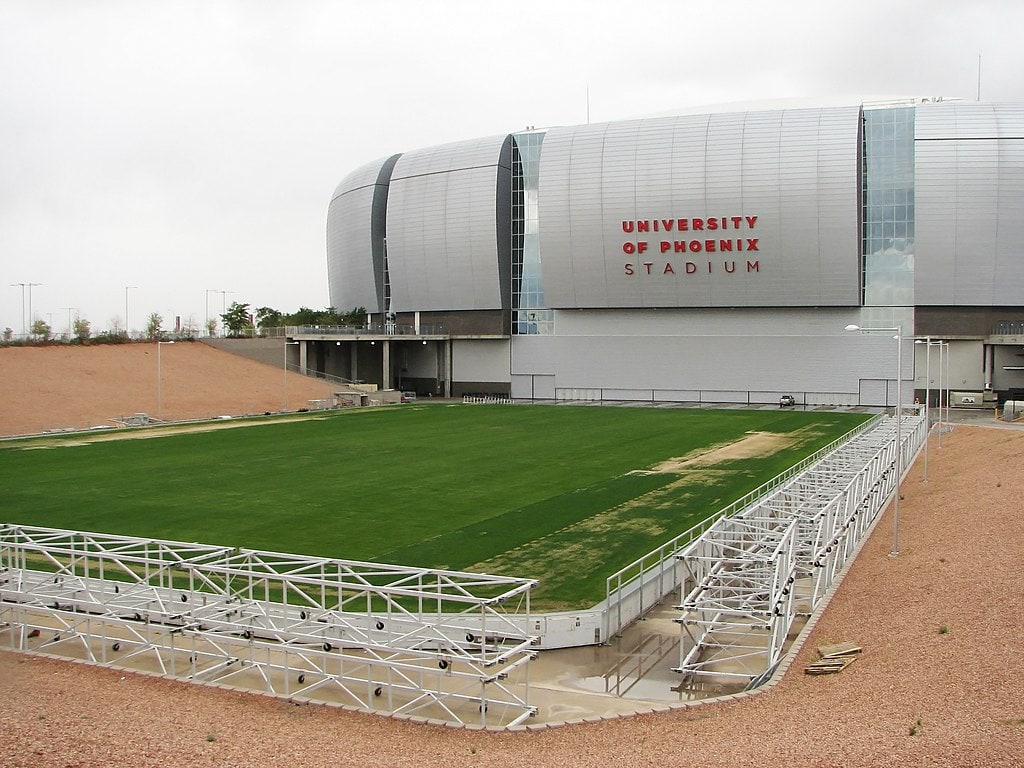
State Farm Stadium grass, Bernard Gagnon,
Multifunctionality is now a basic feature of architecture, though this was not the case years ago. There was a time when only one specific sport was played in a stadium (no others), and only music was played in a concert hall, no games. Those times are long gone.
Now, thanks to advances in engineering and more rational use of infrastructure, most public buildings have more than one function. The State Farm Stadium, which was originally built for football, can hold rallies and even vaccinate people.
Multifunctionality is going to be a key aspect during the 21st century due to the enormous savings in resources and energy that come from not having to build a building for each use (and having that building stand empty).
A white cover that increases the albedo
In addition to little rain, Arizona has an exceptionally warm climate, which is why Peter Eisenman designed the State Farm Stadium using principles of bioclimatic architecture. One of these is the use of albedo as a system that prevents extra energy expenditure.
Albedo is the percentage of radiation reflected by a surface. While dark and matte surfaces have low albedos that retain heat and turn their interior into an oven (which is useful in cold countries), bright white surfaces reflect almost all solar irradiance. This is the case with this stadium.
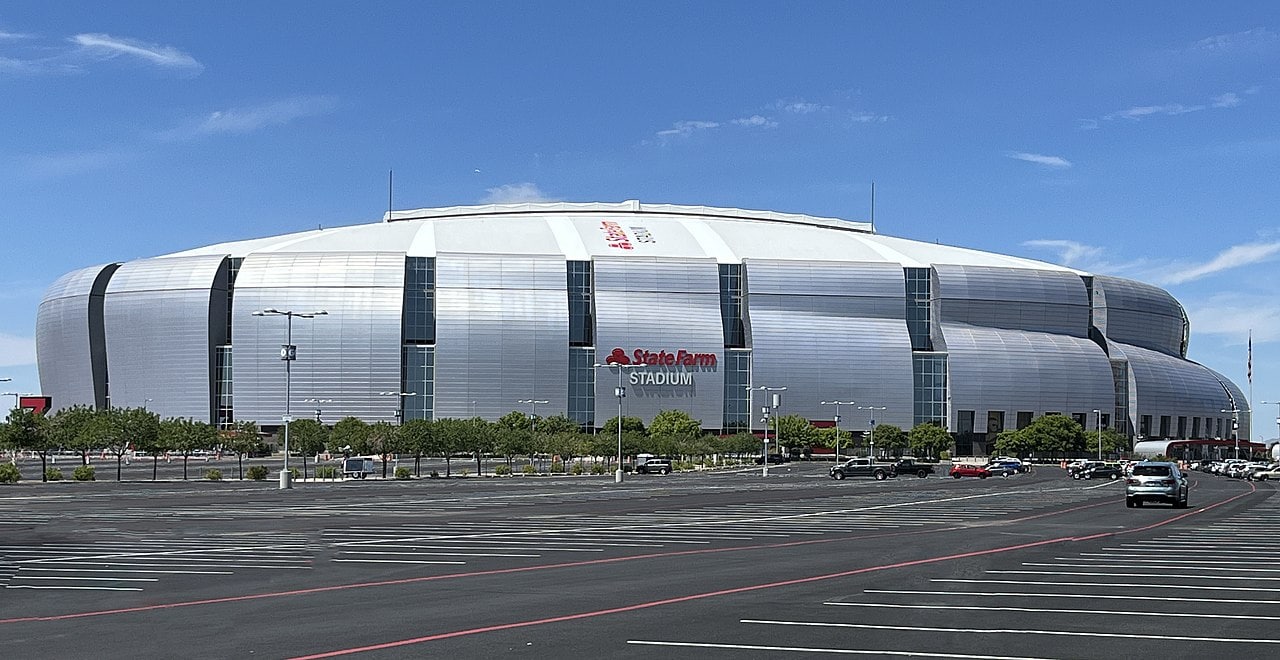
Exterior view of State Farm Stadium, Troutfarm27,
Seen from the outside, the stadium resembles a silver disc resting on the ground. In fact, stadiums around the world have been taking on similar shapes for decades. This is the case with the Santiago Bernabéu in Madrid (Spain), the Tottenham Hotspur in London (United Kingdom), and the Aix Arena in Aix-en-Provence (France).
Being surrounded by a large parking lot probably doesn’t help matters since lots without vegetation are among the systems that trap the most heat and warm air. Unlike the stadium, the parking lot is black, matte, and very extensive.
A significant capacity expansion
This stadium has a large space where more locations can be set up. This is thanks to the removable stands that the green field goes under when coming and going from the field. In fact, it cannot move if there are occupants in this gap.
There are two ways to increase the capacity in this space: either by means of stands temporarily set up along the same slope as the rest of the stadium or by means of conventional folding chairs. Choosing one stand or the other depends on the event and the need to remove the turf.
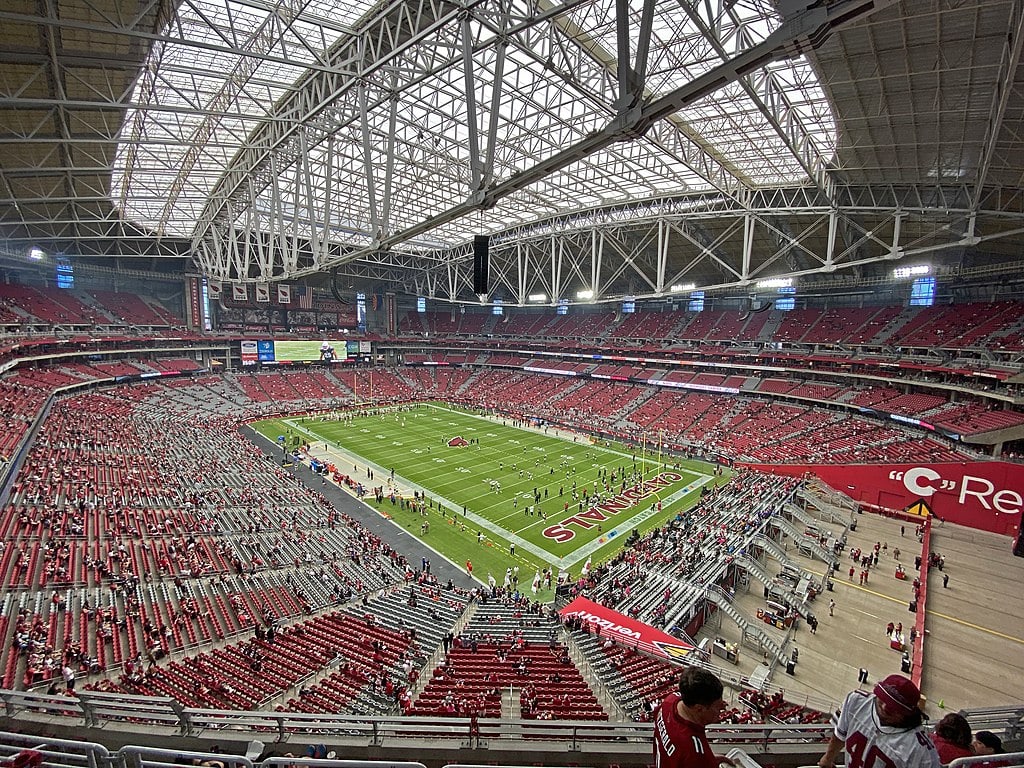
State Farm Stadium removable bleachers, John Martinez Pavliga,
A retractable roof: an engineering marvel
One of the most complex challenges of the State Farm Stadium was the retractable roof, which serves both to prevent air conditioning losses and to prevent sunlight from bothering attendees. The roof is not only sloped but also forms a curve.
Retractable roofs are actually not new. The Roman Colosseum had awnings that served the same purpose, and this system is currently used in the National Arena stadiums in Bucharest (Romania), the Deutsche Bank Park in Frankfurt (Germany), and the National Stadium in Warsaw (Poland). Metal roofs have been in use for decades.
However, this one was particularly challenging due to the slope. Finally, the design incorporated a semi-transparent surface mounted on a plate capable of moving on steel rails. It is a true feat of engineering.
Main image: Blervis,





There are no comments yet